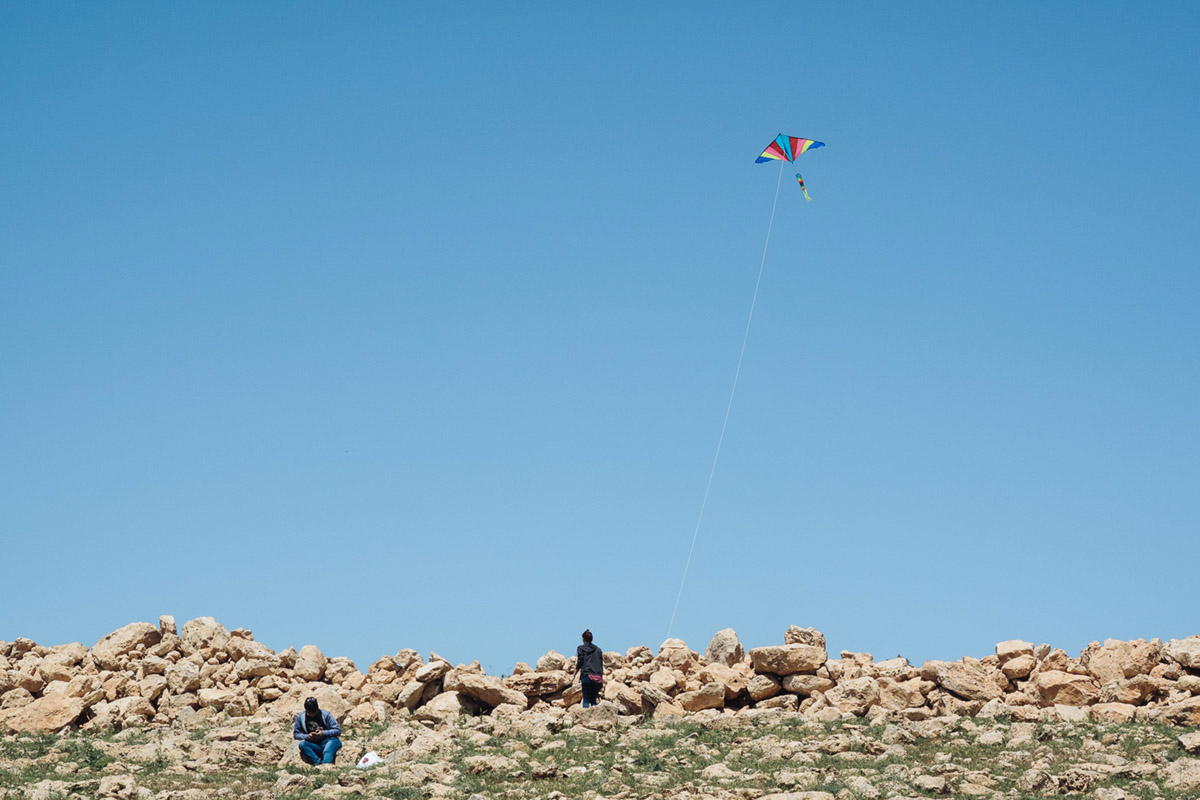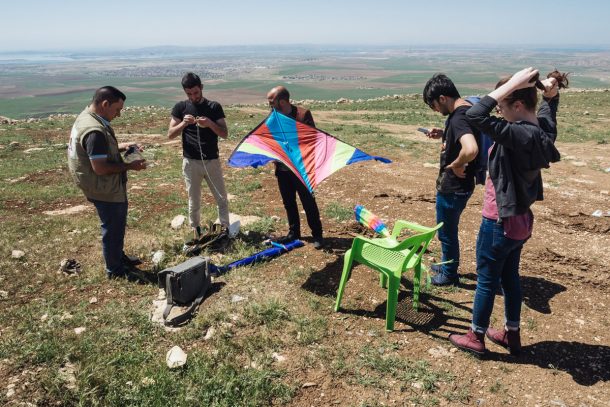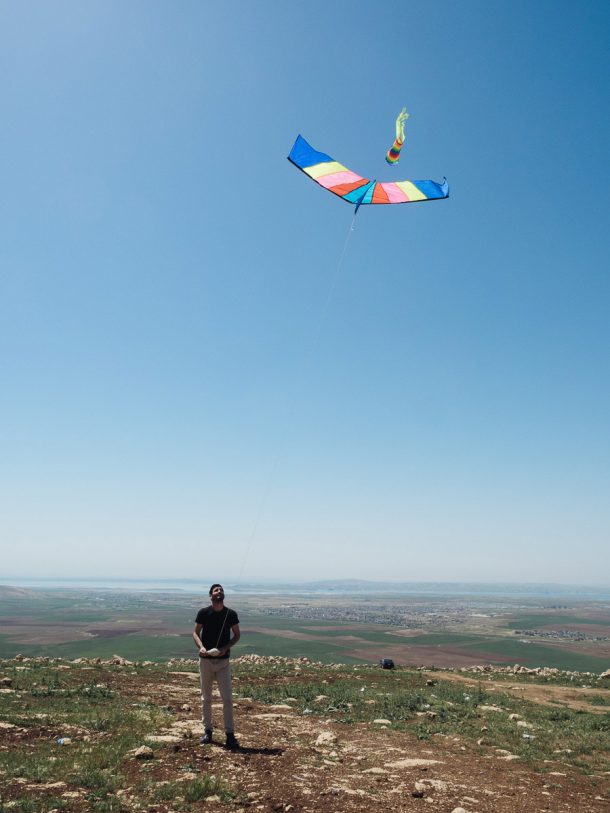
This March the V&A, commissioned by British Council and in collaboration with Art Jameel, present the official UK Pavilion for the XXII Milan Triennale, Maps of Defiance. This exhibition presents the crucial work of the interdisciplinary research agency Forensic Architecture (FA) and their ongoing collaboration with Yazda, the global organisation for the Yazidi people.
In August 2018 FA began to work with local documentation teams to provide the necessary tools and skills to record sites of genocide and destruction in northern Iraq for persecution purposes. Presented in Milan are the initial stages of a wider project, which is still an active investigation. Maps of Defiance follows the V&A’s interest in cultural heritage reconstruction and protection as explored in our Culture in Crisis programme, and emphasises the importance of understanding contemporary digital design process, with all its myriad applications, as it evolves today.
In August 2014, the Islamic State (Isis) invaded the Sinjar region of northern Iraq, intent on destroying Yazidi communities who have inhabited the area since the twelfth century. The Isis campaign included the systematic killing, torture, and sexual enslavement of Yazidis, and the destruction of their homes, agriculture, and places of worship. Many such sites in Sinjar are still surrounded by mines and boobytraps left by Isis.

In order to produce a detailed record of their current condition, Forensic Architecture developed ways to work accurately, discreetly and safely in these difficult conditions. Using kites, drones and bottle rigs for cameras – inexpensive tools that are easily acquired and transported – the documentation team created a database of material for analysis. The thousands of images produced from each site were then processed by Forensic Architecture into a 3D point-cloud through a process known as ‘structure from motion’ photogrammetry.
Photogrammetry is a computational process through which distance and movement measurements are extracted by comparing several still photographs. The resulting point-cloud is geolocated by recording the real-world GPS coordinates of certain points within the images. By measuring and recording the distance parts of a building have been thrown from their original location, investigators can locate the source of an explosion.
For the Milan Triennale, the V&A developed further the work shown at the London Design Biennale in 2018. For the first iteration we were keen to focus in on the tools and process, displaying the DIY equipment used during training in Turkey and Iraq, and the analysis they provide. For Milan we have placed emphasis on Forensic Architecture’s technique and provided more context to the Yazidi’s culture, heritage and architecture. We hope that this documentation can create a legacy for the Yazidi culture, particularly as little formal documentation of their history and culture exists.
The exhibition seeks to underline these innovative methods, and the potential these seemingly mundane tools can have. We needed our designer, Paul Bailey, to wrestle with the nuances of how we understand text, typography and graphic language to help us open up the details of the investigation. It’s a complicated case – with many points that need explanation – so we sought to create a design that would mirror the deeply analytical approach of Forensic Architecture, while making it engaging, and clear, for our audiences.


In response to Forensic Architecture’s on-the-ground practice, Paul and I were inspired by Bauhaus architect Herbert Bayer’s ‘mobile eye’. When documenting the destroyed sites Forensic Architecture asked the training team to take photographs at different angles, and different heights, something we found mirrored in Bayer’s ‘point of view’ constructions. Bayer’s approach, which he explored extensively in his design of the German pavilion (‘Section Allemande’) for the 1930 salon of the Société des artistes décorateurs in Paris, prioritises the ways in which we physically see information, which isn’t necessarily linear or on one visual plane. In the 1930 exhibition, architectural photographs were placed to reflect the field of vision of the human eye, enveloping the visitor and encouraging them to see the total sum of images as a series of relationships, rather than isolating individual elements for scrutiny.
For Maps of Defiance at the Triennale, we borrowed from this thought. Although the material we were working from was vastly different from the German Werkbund of the 1930s, we were keen to enable visitors to see how different techniques and lines of enquiry are combined in order for Forensic Architecture to analyse sites of violence and destruction. What resulted was a series of ‘context panels’ that homed in on specific points of consideration, from the architectural and religious history of the Yazidi and the events of 2014, to specific examples of digital reconstruction and cultural archiving. A specially commissioned pair of films unpack the how-to methods and analytical frameworks that Forensic Architecture have constructed.
We hope this exhibition will show the value and urgency of evidence documentation in post-conflict zones, and how low and high-tech digital design tools can be disseminated, and used, to empower local communities. This form of ‘salvage archaeology’ can be integral to reconstruction efforts by the Yazidi. Two of the temples featured in the exhibition, Sheik Hassan and Sheikh Mand, were rebuilt in Bashiqa and Bahzani by the local communities, with ceremonies starting again on 26 April 2017.
Digital design is something we interact with daily, from our smartphones to social media, and opening up the many ways in practitioners are pushing boundaries is key to understanding the full scope of what new (and familiar) technologies can do.